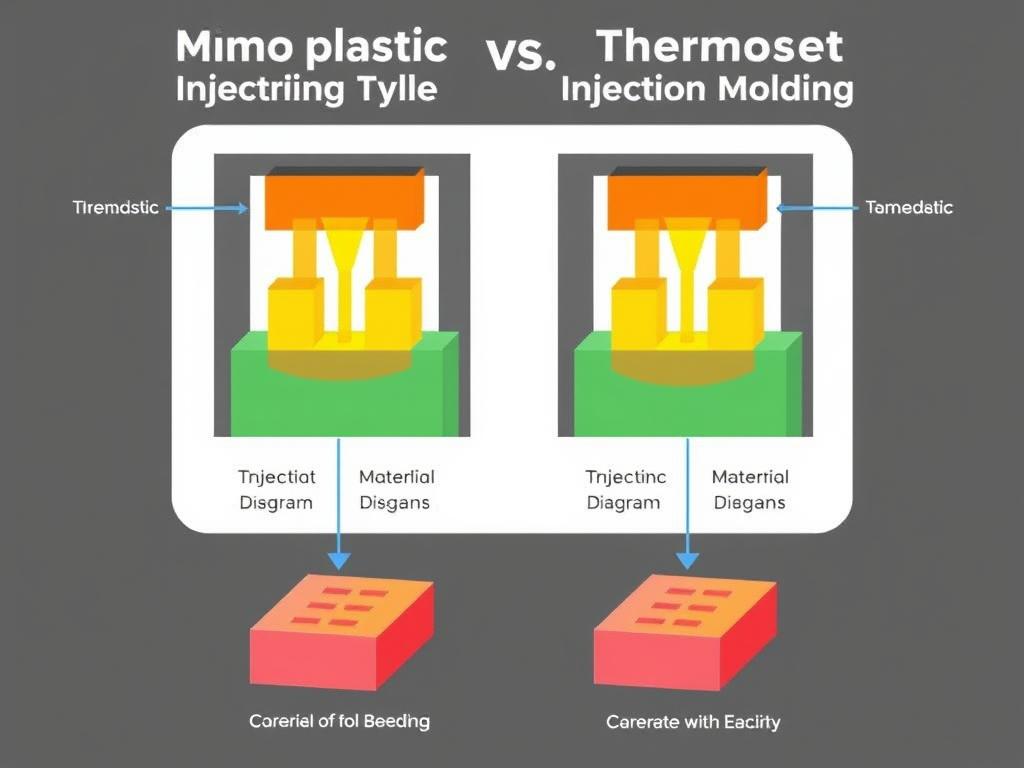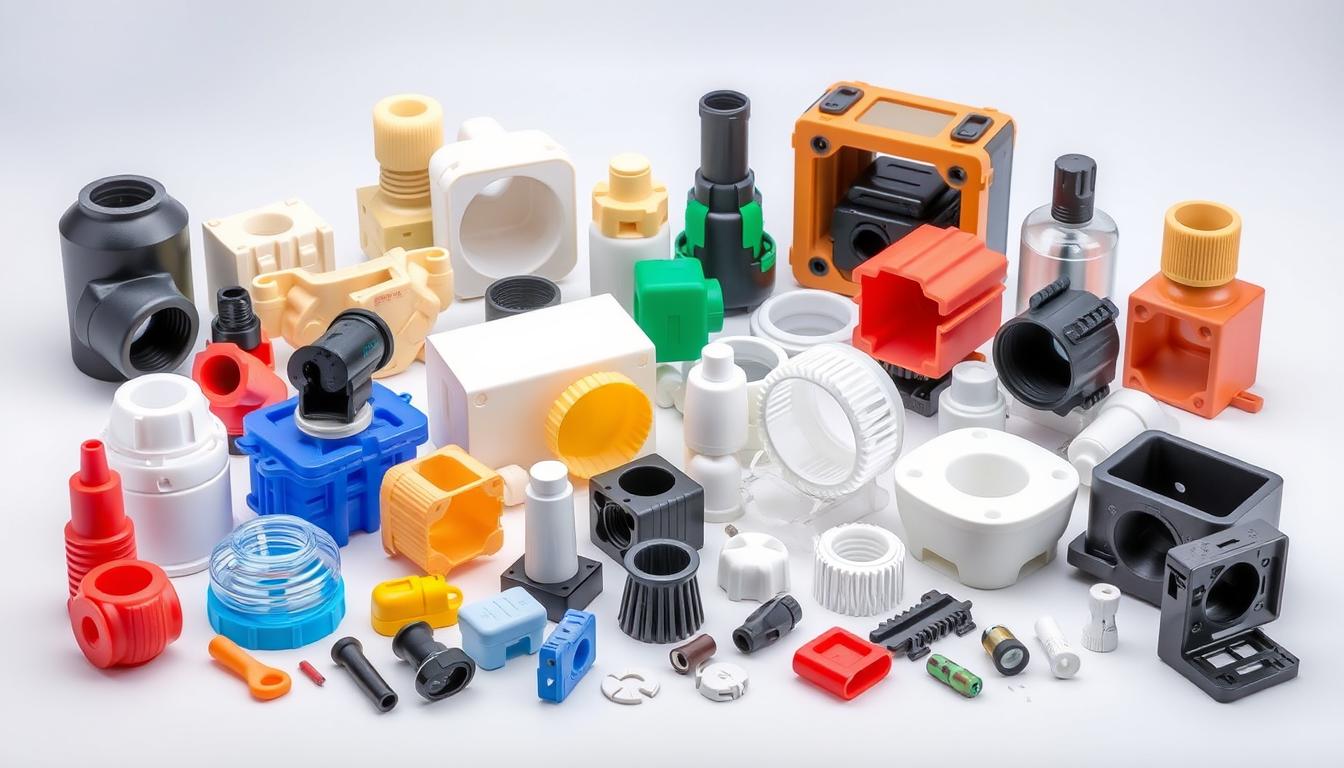Injection molding services represent one of the most versatile and cost-effective manufacturing methods for producing plastic parts at scale. Whether you're developing a new product, scaling production, or seeking to optimize your manufacturing process, understanding the fundamentals of injection molding can help you make informed decisions. This comprehensive guide explores everything from the basic principles to advanced considerations when selecting an injection molding service provider.
What Is Injection Molding? Understanding the Fundamentals

Modern injection molding machine with operator monitoring the production process
Injection molding is a manufacturing process used to produce parts by injecting molten material into a mold. Once the material cools and solidifies, it takes the shape of the mold cavity, creating a precise replica of the desired part. This process is ideal for mass production, as it can create thousands of identical parts with minimal waste and high efficiency.
The Injection Molding Process: Step by Step
Types of Injection Molding

Comparison between thermoplastic and thermoset injection molding processes
Thermoplastic Injection Molding
Thermoplastics can be repeatedly melted and solidified without significant degradation. This makes them ideal for recycling and reworking. Common thermoplastics include ABS, polycarbonate, polypropylene, and nylon.
The process involves heating the material until it melts, then injecting it into the mold where it cools and solidifies. The finished part can be remelted if necessary.
Thermoset Injection Molding
Thermoset materials undergo a chemical change during the molding process. Once cured, they cannot be remelted or reshaped. This gives them excellent heat resistance and dimensional stability.
The process involves injecting partially cured material into a heated mold, where it undergoes a chemical reaction to fully cure. Common thermosets include epoxy, silicone, and polyurethane.
Advantages of Professional Injection Molding Services

Benefits of Injection Molding Services
- Cost-Efficiency at Scale: While initial tooling costs can be high, the per-unit cost decreases significantly with volume, making it extremely cost-effective for mass production.
- Exceptional Precision: Modern injection molding services can achieve tolerances as tight as ±0.001 inches, ensuring consistent quality across thousands of parts.
- Material Versatility: Compatible with hundreds of materials, from standard plastics to high-performance engineering resins, allowing for customized material properties.
- Complex Geometries: Capable of producing intricate designs with features like undercuts, threads, and thin walls that would be difficult with other manufacturing methods.
- High Production Speed: Cycle times as quick as a few seconds per part enable rapid production of large quantities.
- Minimal Waste: Runners and sprues can be recycled, and the precise nature of the process minimizes material waste.
- Surface Finish Options: Various textures, colors, and finishes can be incorporated directly in the molding process.
- Automation Potential: The process can be highly automated, reducing labor costs and increasing consistency.
Limitations to Consider
- High Initial Investment: Mold tooling can cost thousands to tens of thousands of dollars, depending on complexity.
- Lead Time: Creating custom molds typically takes 4-8 weeks before production can begin.
- Design Constraints: Features like draft angles and uniform wall thickness are necessary for proper molding.
- Minimum Order Quantities: Many providers require minimum orders to offset tooling costs.
- Design Changes: Modifications after tooling is created can be expensive and time-consuming.
Scalability: From Prototypes to Mass Production
One of the greatest advantages of working with professional injection molding services is their ability to scale with your needs. Many providers offer solutions for every stage of product development:
Prototype Molding
Aluminum tooling or rapid tooling options allow for quick turnaround of functional prototypes that accurately represent production parts. These tools typically produce hundreds to a few thousand parts.
Bridge Production
When transitioning from prototyping to full production, bridge tooling provides a cost-effective middle ground, producing tens of thousands of parts while final production tooling is being prepared.
Mass Production
Hardened steel production tooling enables the manufacturing of millions of parts with consistent quality and minimal maintenance. The per-unit cost becomes extremely competitive at this scale.
Top Materials Used in Injection Molding Services

Various plastic pellets used in injection molding processes
Material selection is crucial in injection molding as it determines the physical properties, appearance, and cost of your final product. Professional injection molding services typically offer a wide range of materials to suit various applications.
Top 5 Materials Used in Injection Molding
- Properties: Tough, rigid, impact-resistant
- Heat Resistance: Moderate (105°C)
- Applications: Consumer electronics, automotive components, toys
- Cost: $$ (Moderate)
- Advantages: Excellent surface finish, good dimensional stability
ABS (Acrylonitrile Butadiene Styrene)
- Properties: Lightweight, flexible, chemical resistant
- Heat Resistance: Good (130°C)
- Applications: Packaging, containers, automotive parts
- Cost: $ (Low)
- Advantages: Excellent fatigue resistance, good for living hinges
Polypropylene (PP)
- Properties: Extremely tough, transparent, impact-resistant
- Heat Resistance: High (135°C)
- Applications: Safety equipment, medical devices, optical components
- Cost: $$$ (High)
- Advantages: Optical clarity, high strength-to-weight ratio
Polycarbonate (PC)
- Properties: Strong, abrasion-resistant, self-lubricating
- Heat Resistance: High (150-180°C)
- Applications: Gears, bearings, mechanical components
- Cost: $$$ (High)
- Advantages: Excellent mechanical properties, good chemical resistance
Nylon (PA)
- Properties: Flexible, chemical resistant, good insulator
- Heat Resistance: Low to moderate (80-120°C)
- Applications: Containers, packaging, household items
- Cost: $ (Low)
- Advantages: FDA compliant grades available, good impact strength
Polyethylene (PE)
- PEEK: Ultra-high performance, heat resistant (250°C+)
- PEI (Ultem): Flame retardant, high strength
- TPE/TPU: Rubber-like flexibility and durability
- POM (Acetal): Low friction, high stiffness
- Silicone: Heat resistant, biocompatible
Specialty Materials
Common Applications of Injection Molding Services Across Industries

Diverse range of products manufactured through injection molding across industries
The versatility of injection molding makes it suitable for countless applications across virtually every industry.
Here's how different sectors leverage injection molding services to create essential components and products:

Automotive Applications

Medical Device Manufacturing

Consumer Goods

Electronics Industry

Packaging Solutions

Aerospace Components
How to Select a Reliable Injection Molding Service Provider
Choosing the right injection molding service provider is crucial for project success. Here are key factors to consider when evaluating potential partners:
Essential Criteria for Selecting an Injection Molding Service
| Selection Criteria | What to Look For | Why It Matters |
| Technical Capabilities | Machine tonnage range, multi-cavity capability, specialty processes (overmolding, insert molding) | Ensures the provider can handle your specific part requirements and volumes |
| Quality Certifications | ISO 9001, ISO 13485 (medical), IATF 16949 (automotive) | Demonstrates commitment to quality management and industry standards |
| Engineering Support | Design for Manufacturing (DFM) feedback, material selection guidance, mold flow analysis | Helps optimize your design for manufacturability, quality, and cost |
| Prototyping Options | Rapid tooling, low-volume production capabilities, bridge tooling | Allows for testing and validation before committing to full production |
| Production Capacity | Number of machines, automation level, shift operations | Determines ability to scale with your needs and meet deadlines |
| Secondary Operations | Assembly, pad printing, painting, ultrasonic welding | One-stop solution reduces logistics and quality control challenges |
| Material Expertise | Range of materials offered, specialty materials experience | Ensures optimal material selection for your application |
| Quality Control | Inspection equipment, documented processes, statistical process control | Consistent part quality and reduced defect rates |
Questions to Ask Potential Injection Molding Service Providers
Cost-Saving Strategies for Injection Molding Services
While injection molding offers excellent economies of scale, there are numerous strategies to further optimize costs without sacrificing quality. Implementing these approaches can significantly reduce both tooling and per-part expenses.
Design Optimization for Cost Reduction
Production Strategies to Reduce Costs

Multi-cavity mold design for increased production efficiency
Material Selection
Tooling Strategies
Process Optimization
Cost-Saving Tip: Early Collaboration
Involving your injection molding service provider early in the design process can lead to significant cost savings. Their expertise can help identify opportunities for design optimization, material selection, and process efficiency before tooling begins.
Conclusion: Maximizing the Value of Injection Molding Services

Injection molding services offer a powerful combination of precision, scalability, and cost-efficiency for plastic part production. By understanding the fundamentals of the process, material options, and selection criteria for service providers, you can make informed decisions that optimize your manufacturing outcomes.
Remember that successful injection molding projects typically involve close collaboration between design teams and manufacturing partners. Early engagement with your injection molding service provider can lead to design optimizations that improve quality, reduce costs, and accelerate time-to-market.
Whether you're developing a new product, scaling production, or seeking to improve your existing manufacturing process, professional injection molding services provide the expertise, equipment, and capabilities to transform your designs into high-quality plastic parts at any volume.
Are you ready to start your injection molding project?
Finding the right injection molding service provider is crucial to the success of your project. Contact us now to get professional support!
Frequently Asked Questions About Injection Molding Services
What is the typical lead time for injection molding tooling?
Lead times for injection mold tooling typically range from 4-8 weeks depending on complexity. Simple, single-cavity aluminum tools may be completed in as little as 2-3 weeks, while complex multi-cavity steel tools can take 10-12 weeks. Many injection molding service providers offer expedited options for time-sensitive projects.
What is the minimum order quantity (MOQ) for injection molding?
MOQs vary widely among injection molding service providers. Some offer no minimum for prototype runs with existing tooling, while others may require 500-1,000 pieces to offset tooling costs. For production runs, MOQs typically start at 1,000-5,000 pieces but can be lower with providers specializing in low-volume production.
How long do injection molds last?
Mold longevity depends on materials, maintenance, and part complexity:
- Aluminum molds: 10,000-100,000 cycles
- Steel molds (P20): 500,000-1,000,000 cycles
- Hardened steel molds: 1,000,000+ cycles
Regular maintenance and proper storage can significantly extend mold life.
Is injection molding suitable for prototyping?
Yes, injection molding can be used for prototyping, especially when you need functional prototypes in the actual production material. Rapid tooling options using aluminum molds or simplified steel molds can provide production-equivalent parts in days rather than weeks. For very low quantities (1-10 pieces), other prototyping methods like 3D printing may be more cost-effective.
Who owns the injection mold tooling?
Typically, the customer who pays for the tooling owns it. Most injection molding service providers will store your tooling at no charge while in active production. Some may charge storage fees for inactive tools. Always clarify tooling ownership, storage policies, and transfer procedures in your agreement with the service provider.
What quality certifications should I look for in an injection molding service?
Key certifications depend on your industry:
- ISO 9001: Basic quality management system (minimum standard)
- ISO 13485: Medical device manufacturing
- IATF 16949: Automotive industry standard
- UL Certification: For electrical components
- FDA Registration: For food-contact or medical applications
Additionally, look for providers with documented quality control processes and inspection capabilities.

